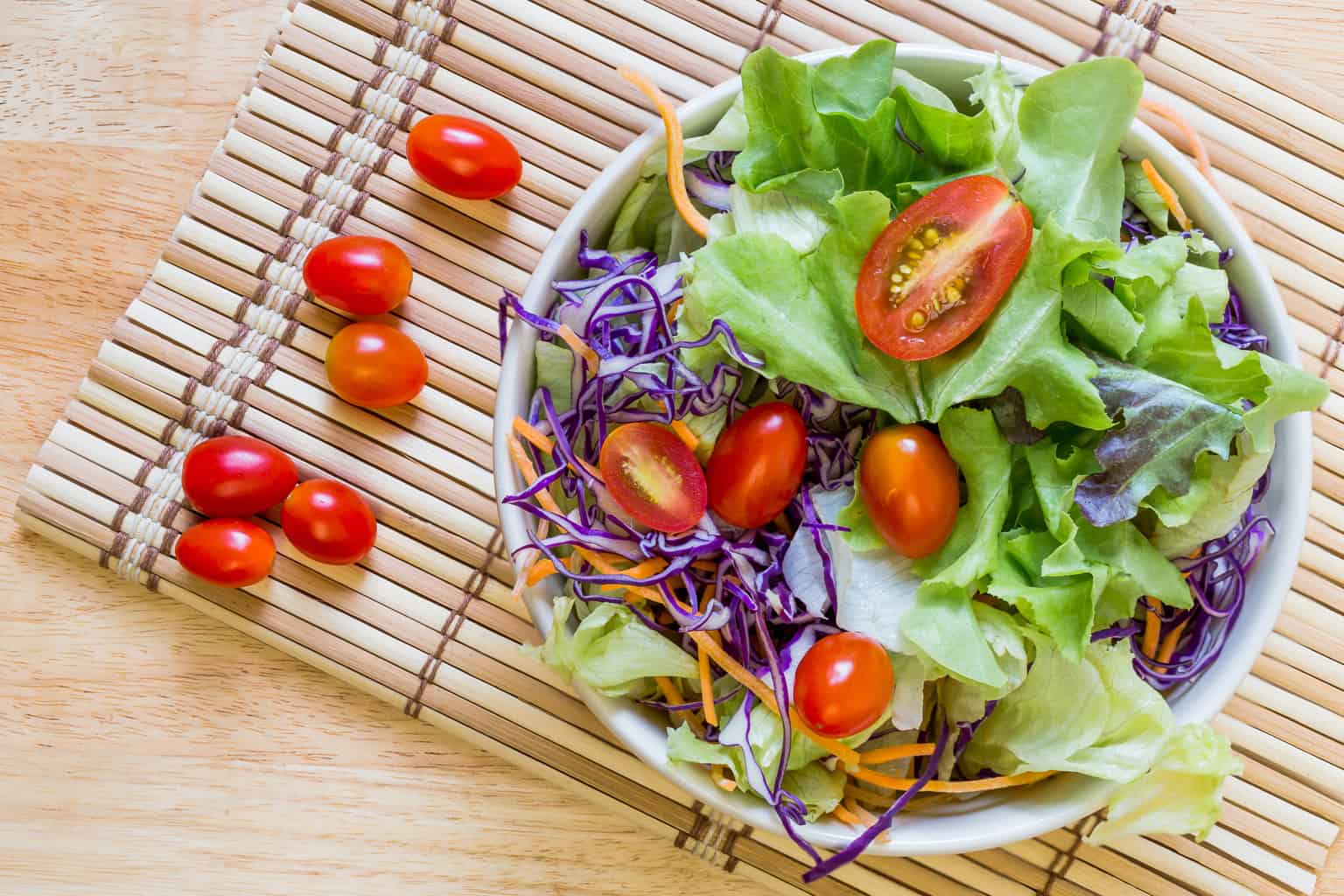- PhentermineLearn more about phentermine and how to get the most from your weight loss journey.
- ResourcesAdditional information and tools to help you make the most of your effort.
- AlternativesLearn more about the most popular weight loss medications and science-backed supplements
What Can You Eat On Paleo Diet?
Published on December 9, 2024

Obesity has rocketed to a major global health fright (1). Without quick moves to tackle the emotional roots of their appetite, folks could wrestle with enduring obstacles.
Someone who has a very high body mass index (BMI) will be at risk of many serious health conditions like hypertension, heart diseases, stroke, type 2 diabetes, gallbladder problems, apnea, asthma, chronic fatigue, and even some kinds of cancer (1).
Dealing with obesity and other similar weight-control problems are best addressed by fostering a healthier lifestyle. Many people would change their diet and activity patterns.
In the year 2013, the paleo diet became very popular. While many have embraced it as a healthy and reasonable, some professionals and nutrition organizations still think that it is downright harmful.
This article is a basic introduction to the paleo diet, providing essential information and meal plans.
What is the Paleo Diet?
This dietary plan is based on foods similar to what our ancestors might have eaten a million years ago.
The paleo diet promotes eating unprocessed and whole animal and plant foods such as eggs, fish, meat, fruits, vegetables, nuts, and seeds, which can all be obtained by gathering and hunting. It limits processed foods, dairy, sugar, legumes, and grains.
A study shows that diets that focus on whole foods are better for weight loss and overall health. They are considered to be more filling, contains fewer calories, and restricts processed foods, which are common culprits to many diseases (2, 3, 4).
The main objective of the paleo diet is to bring back the early humans’ way of eating. It is believed that the human body is genetically mismatched to the modern diet that emerged with farming practices. The rapid and late change in the human diet, according to the discordance hypothesis, outpaced the body’s ability to adapt (5).
People would refer to the paleo diet in several other names like caveman diet, Stone Age diet, and hunter-gatherer diet.
How Is It Effective in Weight Loss?
The paleo diet can help you lose weight in several ways:
1. Rich in Protein
Protein is one of the most important nutrients for weight loss. It speeds up your metabolism, decreases your appetite, and controls different hormones that regulate body weight (6, 7, 8).
This meal plan encourages followers to eat protein-rich foods like eggs, fish, and meat. In fact, an average paleo diet can provide between 25-35% calories from protein.
2. Decreases Calorie Intake
In order to lose weight, you have to lessen your calorie intake. It is very important to pick foods that are filling, as they can help fend off hunger and make you eat less.
Studies proved that the paleo diet is more filling than other popular meal plans (9, 10).
Also, the paleo diet is more effective in increasing the levels of hormones that will keep you full after a meal like GIP, PYY, and GLP-1 (11).
3. Fewer Carbohydrates
Limiting your carb intake is one of the most effective ways to lose weight.
More than 23 studies revealed that a low-carb diet is better than traditional low-fat diets for weight reduction (12, 13, 14).
This diet decreases your carb intake by removing common sources such as potatoes, bread, and rice.
4. Removes Added Sugar
Eating excessive amounts of sugar can be destructive to your weight loss efforts and overall health.
It adds calories to foods and is low in nutrients. High intakes of added sugar may also cause diabetes and heart problems (15, 16).
The paleo diet removes added sugar altogether by promoting natural sources like vegetables and fruits. These contain natural sugars along with several other essential nutrients like water, vitamins, and fiber.
5. Cuts Out Processed Foods
Obesity is being linked with the modern diet as it makes people eat processed foods packed with calories and low in nutrients. This is known to increase people’s risk of different diseases (17).
Studies have found that high intake of processed foods reflects the rise in obesity (18, 19).
Paleo diet cuts out processed foods. Instead, it asks its followers to eat lean sources of protein, fresh vegetables and fruits, and healthy fats, which has fewer calories and are high in nutrients.
Studies Supporting the Paleo Diet’s Claims for Weight Loss
Evidence shows that the paleo diet is effective for weight loss (20, 21, 22, 23, 24).
One study on 14 healthy medical students showed that following a paleo diet for 3 weeks have helped then lose an average of 2.3 kgs. Their waist circumference was also reduced by 1.5 cm (25).
Other studies compared the paleo diet and traditional low-fat diets. Research on 70 obese women aged 60 and above revealed that eating a paleo diet or a low-fat, high-fiber diet for 2 years can help lose 2.5 times more weight after 6 months and 2 times more weight after a year.
After 2 years, all had regained some weight, but those who took the paleo diet had still lost more weight overall (26).
Another research observed 13 people diagnosed with type 2 diabetes. They followed a paleo diet and then a diabetes diet for two consecutive 3-month periods.
Results showed that those who were on the paleo diet lost 3 kgs and 4 cm more from their waistlines (27).
These studies are fairly new. Therefore, there are less published studies on its long-term effects. While these studies suggest that the paleo diet is more superior, comparing it to more diets would further strengthen this argument.
Paleo’s Effect on Other Aspects of Health
Aside from its effects on weight loss, the paleo diet has been associated with many other health benefits:
1. Reduces Belly Fat
Belly fat is very unhealthy and it can increase the risk of heart problems and diabetes (28).
One study on 10 healthy women showed that they experience a 3-inch reduction in waist circumference after following a paleo diet for 5 weeks. There is also an average 10-pound decrease in weight overall (24).
2. Increases Insulin Sensitivity and Reduces Blood Sugar
Insulin sensitivity describes how easily your cells can respond to insulin. Increasing it can be a good thing as it makes your body more efficient at removing sugar from your blood.
Studies have found that the paleo diet can help increase insulin sensitivity and decrease blood sugar levels (29, 30).
3. Controls Inflammation
Inflammation is a natural process that helps the body fight and heals infections. However, chronic inflammation is dangerous and may increase the risk of diabetes and heart diseases (31).
The paleo diet gives emphasis on foods that can help control chronic inflammation. It advocates the eating of fresh vegetable and fruits, which are excellent sources of anti-oxidants. These will help bind and neutralize free radicals in the body, which damages cells during chronic inflammation.
What You Can Eat and What You Can’t
There is actually no one “right” way to eat for everyone. Even the Paleolithic humans thrived on different diets, depending on what was available and where they lived.
Some had a low-carb diet high in animal foods, while others took a high-carb diet with plants.
The following tips below may serve as a guideline. You can adapt to what is suitable for your personal needs and preferences.
The basics would tell you to:
EAT fish, eggs, meats, fruits, vegetables, seeds, nuts, spices, herbs, and healthy fats and oils (32).
AVOID sugar, soft drinks, processed foods, grains, legumes, most dairy products, sweeteners, grains, margarine, vegetable oils, and trans fats (32).
But over the past few years, the paleo group has evolved a little bit. There are now several versions of this diet. Most would now allow some modern foods that science thinks are healthy. These would include gluten-free grains such as rice.
Some foods and drinks are also allowed in small amounts. Red wine is said to be healthy because it is high in antioxidants and other beneficial nutrients. According to experts, dark chocolates with 70% or higher cocoa content are nutritious (32).
If you are thirsty, water should be your go-to-drink. However, most people think that tea and coffee are also good alternatives because they are loaded with anti-oxidants.
Sample Paleo Menus You Can Easily Follow
These sample menus contain a balanced amount of healthy ingredients. You can make some adjustments based on your own needs and preferences.
Set 1
Breakfast: Eggs and vegetables sautéed in coconut oil and one piece of fresh fruit
Lunch: Chicken salad with olive oil and nuts
Dinner: Burgers fried in butter without a bun plus vegetables and some salsa
Set 2
Breakfast: Bacon and eggs with a one piece of fresh fruit
Lunch: Burgers
Dinner: Salmon fried in butter with vegetables
Set 3
Breakfast: Meat with vegetables
Lunch: Meat sandwich in lettuce and fresh vegetables
Dinner: Stir-fried ground beef vegetables and berries
Healthy Paleo Snacks
There is no need to eat more than 3 times daily, but if you get hungry, you can munch on these healthy paleo snacks:
- Hard-boiled eggs
- One piece of fruit
- Baby carrots
- Apple slices with almond butter
- A bowl of berries with coconut cream
- A handful of nuts
Takeaway
While there is no one way to follow a strict paleo diet, the main concept is to avoid processed foods and focus on healthy, whole foods.
Know which one to take and those that must be avoided. You can also add a few modern foods that are proven to be healthy.
If you have worries about switching to a paleo diet, talk to your doctor or a dietitian to determine what’s best for your body.
References:
(1) https://www.apa.org/helpcenter/obesity
(2) https://www.ncbi.nlm.nih.gov/pmc/articles/PMC2897733/
(3) https://www.ncbi.nlm.nih.gov/pmc/articles/PMC2988700/
(4) https://www.nature.com/articles/ijo201081
(5) https://www.mayoclinic.org/healthy-lifestyle/nutrition-and-healthy-eating/in-depth/paleo-diet/art-20111182
(6) https://www.ncbi.nlm.nih.gov/pubmed/18469287
(7) https://nutritionandmetabolism.biomedcentral.com/articles/10.1186/1743-7075-11-53
(8) https://www.ncbi.nlm.nih.gov/pubmed/25926512
(9) https://nutritionj.biomedcentral.com/articles/10.1186/1475-2891-12-105
(10) https://nutritionandmetabolism.biomedcentral.com/articles/10.1186/1743-7075-7-85
(11) https://www.ncbi.nlm.nih.gov/pubmed/25661189
(12) https://www.thelancet.com/pdfs/journals/landia/PIIS2213-8587(15)00367-8.pdf
(13) https://onlinelibrary.wiley.com/doi/full/10.1111/j.1467-789X.2008.00518.x
(14) https://www.ncbi.nlm.nih.gov/pmc/articles/PMC3530364/
(15) https://www.ncbi.nlm.nih.gov/pubmed/24652725
(16) https://jamanetwork.com/journals/jamainternalmedicine/fullarticle/1819573
(17) https://www.ncbi.nlm.nih.gov/pubmed/22221213
(18) https://www.nature.com/articles/0803616
(19) https://www.ncbi.nlm.nih.gov/pubmed/25804833
(20) https://www.ncbi.nlm.nih.gov/pubmed/17522610
(21) https://www.ncbi.nlm.nih.gov/pubmed/19604407
(22) https://www.ncbi.nlm.nih.gov/pubmed/24473459
(23) https://www.ncbi.nlm.nih.gov/pubmed/17583796
(24) https://www.ncbi.nlm.nih.gov/pubmed/23414424
(25) https://www.ncbi.nlm.nih.gov/pubmed/17522610
(26) https://www.ncbi.nlm.nih.gov/pubmed/24473459
(27) https://www.ncbi.nlm.nih.gov/pubmed/19604407
(28) https://onlinelibrary.wiley.com/doi/full/10.1038/oby.2006.277
(29) https://www.ncbi.nlm.nih.gov/pubmed/19209185
(30) https://www.ncbi.nlm.nih.gov/pubmed/25828624
(31) https://www.ncbi.nlm.nih.gov/pmc/articles/PMC2913796/
(32) https://www.healthline.com/nutrition/paleo-diet-meal-plan-and-menu#section5


